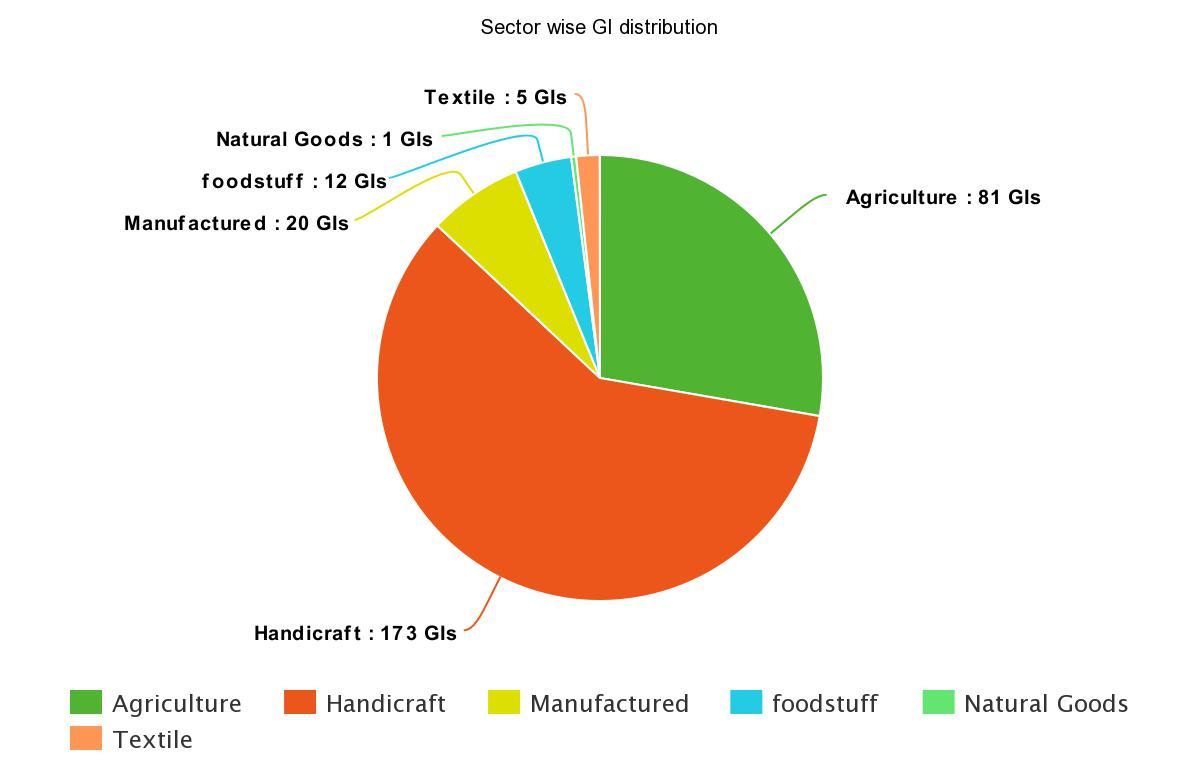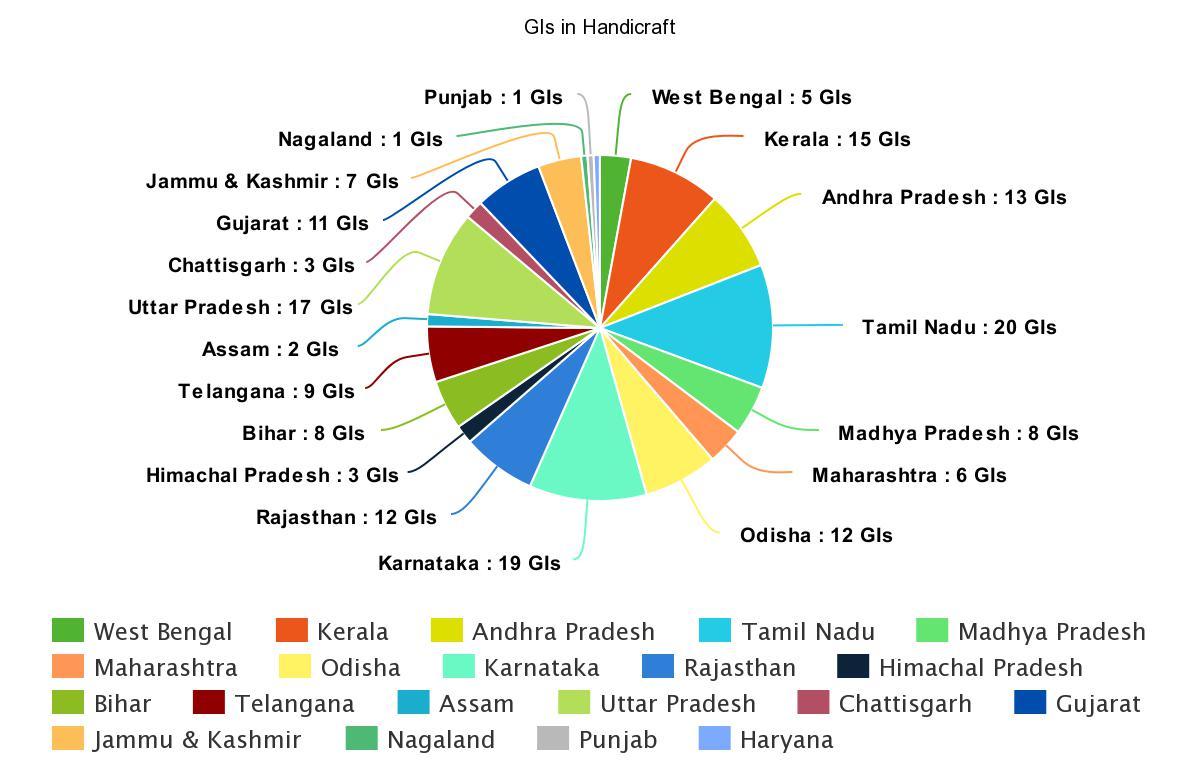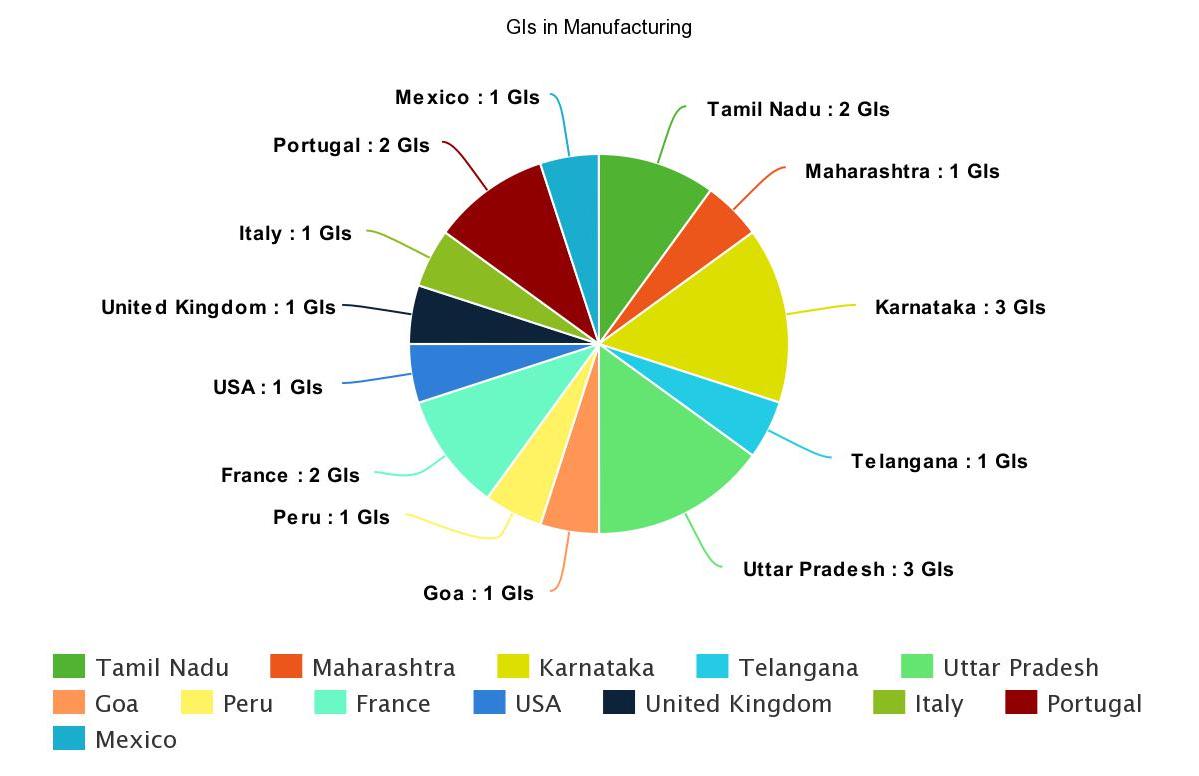Geographical Indications : In a current scenerio
What is the GI tag?
A geographical indication (GI) is a name or sign used on certain products which corresponds to a specific geographical location or origin (e.g. a town, region, or country). The purpose of a geographical indication may act as admittance that the product possesses certain attributes, is made according to traditional methods, or enjoys a certain prominence due to its geographical origin.
For example, Chanderi Fabric is a unique handicraft from Madhya Pradesh.
Geological Indications are secured as a part of Intellectual Property Rights (IPRs) under the Paris Convention for the Protection of Industrial Property. At the International level, GI is administered by World Trade Organization’s (WTO‘s) Agreement on Trade-Related Aspects of Intellectual Property Rights (TRIPS). In India, Geographical Indications enrollment is directed by the Geographical Indications of goods (Registration and Protection) Act, 1999 which came into force with effect from September 2003. The primary item in India to be agreed with GI tag was Darjeeling tea in the year 2004-05.
The fundamental advantages which gather from enlistment under the Act are as per the following:
- Gives lawful security to GI in India;
- Averts unapproved utilization of an enlisted geographical indications by others;
- Empowers seeking legal protection in other WTO part nations.
Why Protect special regional goods with Geographical Indication
An adequate legal protection is necessary for the assurance of legitimate holders of special regional goods from the unscrupulous business practices of different business entities. For example, tea produced in countries like Kenya, Sri Lanka or even Nepal has frequently been passed off far and wide as ‘Darjeeling tea’. Ensuring legal protection of this GI can go far in anticipating such misuse. Without sufficient GI assurance both in the household and global market it is hard to keep the misuse of Darjeeling Tea’s reputation, wherein tea delivered somewhere else would likewise be sold under the Darjeeling brand, making harm buyers and denying the premium price to Darjeeling tea industry.
Likewise, there are many products which needs GI protection but due to lack of knowledge of GI in India the names of such are severely misused. The registration of GI, however not obligatory, offers better legitimate insurance to encourage an activity of infringement. Also the authorized user can exercise his exclusive right to use the GI and can initiate infringement actions against the infringer.
Moreover, the legal protection of GI boosts exports. GI tag not only helps the country’s export market but also helps in promoting economic prosperity of the producers.
Current GI trends in India
According to the list published by Registrar of GI on October 2017, India has 301 GI products registered so far and over 270 more products have applied for the label. The current study of GI trends reveal that India has major share of GI in the field of Handicrafts and Agriculture followed by the GIs of Manufactured items and Foodstuff and lastly the items of Textile and Natural Goods which are least registered. The graph depicted below shows textile and handicrafts in two different slices and analysis performed here are based on considering these two as two different fields but there is a chance that these two could be aggregated.


GIs on Handicrafts alone contribute 57.4% out of the total registered GIs in India. The state of Tamil Nadu tops the GI’s state list of Handicraft with 20 registered GIs. Beautiful reed Pattamadai mats crafted out of korai grass, distinctively designed Kanchipuram Saris, Chola Bronzes and Tanjore Gold Leaf Painting which are simply the apogee of excellence and are renowned worldwide are covered under GI protection. The second is the state of Karnataka with 19 registered GIs. Uttar Pradesh, Kerala, Andhra Pradesh and Rajasthan comes on third, fourth, fifth and sixth position respectively with 17,15,13,12 registered GIs.

After Handicrafts comes the Agricultural sector which contributes to total 26.9% GIs. Maharashtra and Karnataka leads with 23 and 16 registered GIs respectively. The state of Uttar Pradesh which in area is the fifth largest state of India and have a vast fertile land and a great diversity of flora has just 5 registered GI while the state of Madhya Pradesh which is the second largest and have a good reputation in agriculture is currently nowhere in the GI list. This is the reason why the name of the famous Sharbati wheet of M.P. is being used continuously by the big FMCG companies to sell their flour at the premium prices.

Under Manufactured goods there are very few states having registered GIs. Uttar Pradesh and Karnataka are the two both having 3 registered GIs. Kannauj Perfume, Kanpur Saddlery and Meerut Scissors are the old names in the list. There are also some foreign manufactured items which are registered as GI in India. Among them are mostly alcoholic beverages which include Peruvian Pisco, an alcoholic beverage belonging to a variety of grape aguardiente produced in Peru, Champagne and Cognac of France, Napa Valley of USA, Scotch Whisky of UK, Porto of Portugal , etc.

After Manufacturing comes foodstuff contributing 3.9% of registered GIs. Although India has a rich culture and a great variety of foodstuff which are appreciated worldwide, the percentage contribution in this sector is surprisingly low. West Bengal tops the list with just 3 registered GIs. Bardhaman city in West Bengal alone have two registered GI and both on sweet namely Bardhaman Sitabhog and Bardhaman Mihidana. Rajasthan having multitude of royal cuisines but just one registered GI on Bikaneri Bhujia. Madhya Pradesh too have just one registered GI on Ratlami Sev while there are many cuisines like Indori Poha, Usal Poha, Lal balti ki kachori which have a great business potential if registered under GI and promoted by the state government. Italy have 3 registered GI in India namely on Prosciutto di Parma, a dry-cured ham that is usually thinly sliced and served uncooked of specially selected heritage breed pigs raised in 11 regions of Italy, Parmigiano Reggiano or Parmesan cheese prepared from unpasteurized cow’s milk and Asiago cheese known for its crumbly texture.

Under the Natural Goods classification only Makrana Marble of Rajasthan is registered which is one of the two calcitic marble varieties in India, having a high percentage of calcium and is therefore resistant to water seepage and known for its usage in Taj Mahal one of the wonders of Medieval World. Makrana marble was given the geographical indication status in 2015 by the Geographical Indication Registry, Chennai. Marble from Makrana is exported abroad basically to the Persian Gulf nations, the European Union, Southeast Asia, Canada, Pakistan and Russia. In India, it is principally utilized for handicraft and sculpture, aside from development of structures.

Current GI scenario in India and how to register for a new GI
India’s GI Act does not lay much accentuation on investigation and monitoring mechanisms for GI security. Quality related with topographical beginning is the sign of a GI and the current lawful system clearly needs teeth to guarantee it. This may clarifies why one has not known about many GI success stories in India.
The present Indian legitimate structure for GIs should be reinforced to address quality control and consumer expectations by demanding multi-layered quality control frameworks as a precondition for enrollment. Other essential issues faced by GI maker bodies are market access and financing for implementation and advertising. India must hand-hold maker bodies, take a gander at fruitful models of somewhere else and shape these to suit the ground realities.
In India, any association of persons, producers, organization or authority established by or under the law can apply for GI. The applicant must represent the interests of the producers of the concerned goods. An application for registration of geographical indication shall be in prescribed Form (Form GI-1 for the registration of a Geographical Indication in Part A of the Register by an Indian applicant; Form GI-2 for a convention application; an application for goods falling in different classes by an Indian applicant in GI-3 and an application for registration of goods falling in different classes from a convention country in Form GI-4).
The application should include the various requirements and criteria for processing a geographical application as follows:
- How the indication serves to designate the goods as a GI?
- The Class of goods;
- The territory;
- The particulars of appearance;
- Particulars of producers;
- An affidavit of how the applicant claim to represent the interest;
- The standard bench mark or other characteristics of the GI;
- The particulars of special characteristics;
- Textual description of the proposed boundary;
- The growth attributes in relation to the G.I. pertinent to the application;
- Certified copies of the map of the territory
- Special human skill involved, if any;
- Number of producers; and
- Particulars of inspection structures, if any, to regulate the use of GI.
Upon filing of the application accompanied by prescribed fees, a number will be alloted. The application would be examined on turn to check whether it meets the requirements of the GI Act and Rules. After issuance of the Examination Report submission would be considered. If no objections is raised it would be accepted and would be advertised in the Geographical Indications Journal. An opposition can be lodged within a maximum of four month period. If the opposition is dismissed, the application will proceed to registration in Part A of the Register.
After a geographical indication is registered any person claiming to be the producer of the registered geographical indication can file an application for registration as an authorised user in Part B of the Register.
The term of a geographical indications registration is for a period of ten years. The renewal is possible for further period of 10 years each. If a registered geographical indication is not renewed, it is liable to be removed from the register.
The Act also provides criminal remedies. First, the intentional falsification of a geographical indications will bear a prison sentence of at least six months. This may be extended to three years and be accompanied by a fine. Second, the police may conduct search and seizure operations without any warrant. In essence, unauthorized parties may not use geographical indications if such use is likely to mislead the public as to the true origin of the product.
Sources :

